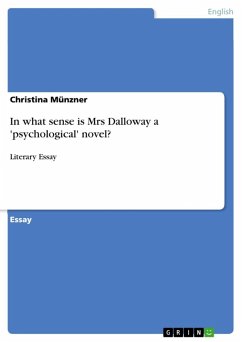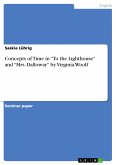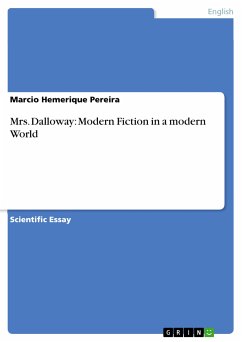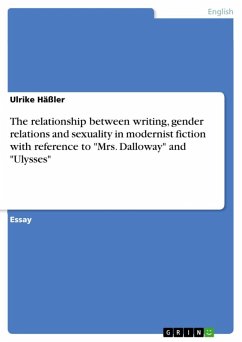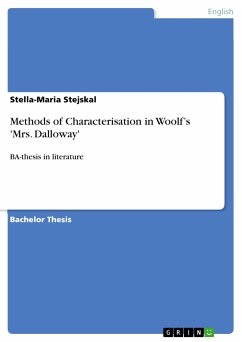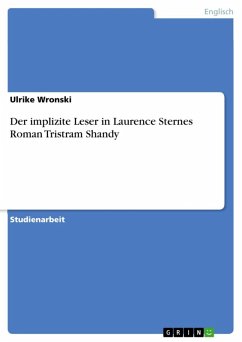Essay from the year 2010 in the subject English Language and Literature Studies - Literature, grade: 1,3, Manchester Metropolitan University Business School, course: English Literature, language: English, abstract: In 'Mrs Dalloway', Virginia Woolf follows her characters' thoughts and feelings throughout one day in London in 1923. This day in the life of Clarissa Dalloway stretches far into her and others characters' past as certain memories always intermingle with their present experiences. Woolf is one of the key figures in modernist writing which puts great emphasis on the representation of the workings of the human mind. In 'Mrs Dalloway', Woolf tries to convey the characters' thoughts as accurately as possible for which she uses the technique known as stream of consciousness. The term was coined by William James in 'Principles of Psychology' (1890) to "denote the flow of inner experiences" (Cuddon 2000: 866). It attempts to depict the myriad thoughts and feelings that pass through the human mind. It was used, amongst others, by authors such as Marcel Proust in 'A la recherche du temps perdu' (1913-27) and James Joyce, who pushed the method to its limits of comprehensibility for the reader in 'Ulysses' (1922). This essay will concentrate on some of the aspects of the stream of consciousness applied in 'Mrs Dalloway' and its psychological impact on the novel as well as on the reader.
Dieser Download kann aus rechtlichen Gründen nur mit Rechnungsadresse in A, B, BG, CY, CZ, D, DK, EW, E, FIN, F, GR, HR, H, IRL, I, LT, L, LR, M, NL, PL, P, R, S, SLO, SK ausgeliefert werden.

